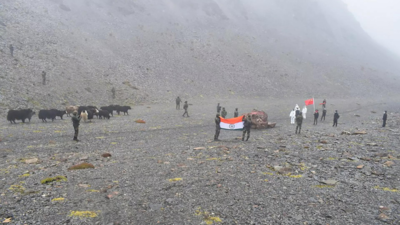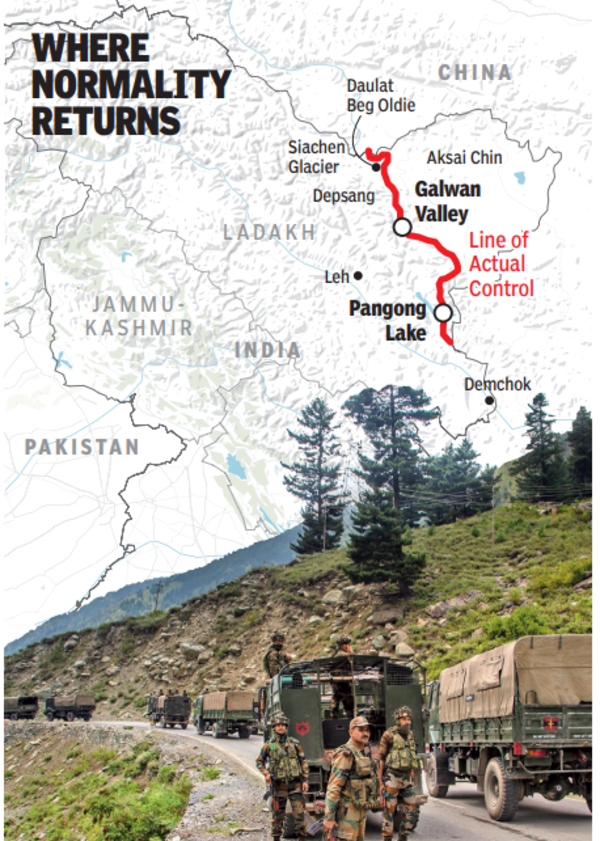Welcome To Latest IND >> Fastest World News
After long negotiations, India and China have finally agreed to return to the patrolling arrangements along the LAC in
eastern Ladakh
that were in place before the Galwan clashes in 2020. The agreement covers the areas of Depsang and Demchok.
External affairs minister S Jaishankar had recently said that about 75 per cent of “disengagement problems” with China had been sorted out and that the key issue was the increasing
militarisation of the frontier
.
“Now, those negotiations are going on. We made some progress… We still have some things to do,” he had said.
Following the foreign ministry’s announcement, EAM Jaishankar said the two countries had “gone back to where the situation was in 2020”. “We can say that the disengagement process with China has been completed… There are areas which for various reasons after 2020 because they had blocked us so we had blocked them. So what has happened is we have reached an understanding, which will allow the patrolling,” he said.
There was no specific mention of the withdrawal of tens of thousands of additional troops stationed by the two countries along the border in Ladakh and there was neither any statement from Beijing on the matter.
Areas Of Strategic Value
Demchok is close to the southernmost part of the LAC in Ladakh (see map), near the state border with Himachal Pradesh. A village in the region was the site of a Chinese incursion during the 1962 conflict but PLA troops did not venture beyond. It was the first place where China prevented Indian authorities from building civic infrastructure, including a road.
Depsang Plains
is a flat area near Daulat Beg Oldie (DBO) in the northwest portion of the disputed Aksai Chin region in UT Ladakh. The disputed area had been occupied by China until India began making headway into the region and now has a road leading to it. Because of the flat terrain, it allows for easy movement of troops and vehicles, including tanks.
Galwan Valley
, where Shyok and Galwan rivers meet, was the site of clashes in 1962 and is a key strategic area. India’s Darbuk-Shyok-DBO (DSDBO) road, which leads to DBO — a military base with an airstrip — passes near the valley. For China, the Galwan region provides a vantage point overlooking the road to DBO.
On Boil Since 2020 Clashes
Foreign secretary Vikram Misri said on Monday the agreement was thrashed out by Indian and Chinese negotiators after weeks of talks aimed at resolving the issues that arose after the Chinese military’s action in eastern Ladakh in 2020.
Indian and Chinese troops first clashed on May 5, 2020, on the north bank of the Pangong Tso lake. There was a major clash on the night of June 15 between an Indian patrol and PLA troops in Galwan Valley with casualties on both sides.
Amid claims and counter-claims regarding the capture of Indian territory in May and June 2020, there were satellite images showing China constructing bunkers and trenches and setting up tents along Pangong Tso lake. It even reportedly built a pier on the lake for boats. After the 2020 clashes, China aggressively built up its presence along the LAC in Ladakh, including by bringing in troops and armoured vehicles.
A Wide-Ranging Dispute
LAC came into existence following the 1962 Sino-Indian war. But it is not properly demarcated and has been the focus of a long-standing dispute between the two neighbours, involving areas stretching from Arunachal in the east to Ladakh in the north.
LAC divides the areas of physical control rather than territorial claims. According to India, the de facto border is 3,488km long, but China says it is considerably shorter. Beijing claims about 90,000sqkm of India’s territory in the northeast, including in Arunachal, while New Delhi says 38,000sqkm of land in China-occupied Aksai Chin should be part of Ladakh.
The 2020 clashes led to a troop build-up by both India and China, but they have since withdrawn forces from some areas on the northern and southern banks of Pangong Tso lake, Gogra and Galwan Valley.
Latest IND



